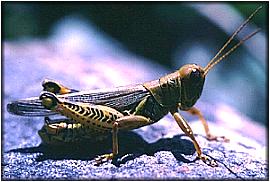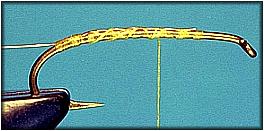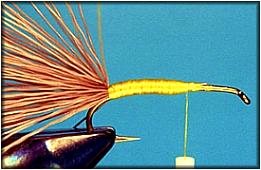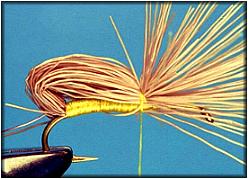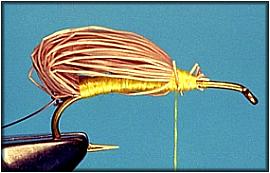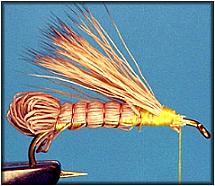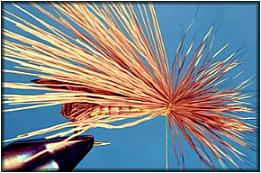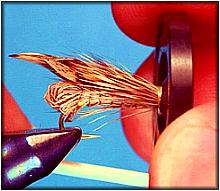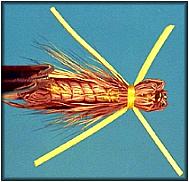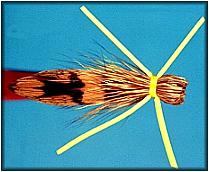Before we go too far, I'd like to finish our hoppers with a look at one
more great fly. We'll be spending the next few weeks spinning and
stacking hair, and leaving hoppers without tying the Henry's Fork Hopper
would be a crime.
Although it doesn't have a spun deer hair head, and spinning hair is
where we were and where we'll be going for a while, I think we need to
look at this fly before we continue along. Consider it a side step if
you will; a necessary look to the side as we travel the road of hair
spinning and manipulation.
 The Henry's Fork Hopper uses a bullet style head. The head is still
created from deer hair, but instead of clipping and shaping the hair,
it's folded back and tied down to form a bullet shaped head. I think
you'll find this style of head useful and durable.
The Henry's Fork Hopper uses a bullet style head. The head is still
created from deer hair, but instead of clipping and shaping the hair,
it's folded back and tied down to form a bullet shaped head. I think
you'll find this style of head useful and durable.
Mike Lawson gets the credit for creating this great pattern that uses
deer and elk hair for most of the body, wing and head. Since the hair is
hollow, the fly floats because of the buoyant characteristics of the
hair, not the way it rests on the surface tension of the water. If the
current pulls it under, it'll pop back to the surface because it's
buoyant. A great fly for turbulent water, but it also does very well in
calm water.
You'll get a look at a new tool today. The Griffin bullet-head tool is
the best item I've found to help create bullet-head flies. Since
bullet-heads are fairly common in streamer flies, the bullet-head tool
has more than one application.
If you're looking for fast fish catching action, it's hard to beat a
Henry's Fork Hopper on a windy day in late summer. You won't need a
graceful landing for this fly to work, real hoppers hit the water with a
plop that quickly gets the attention of any nearby fish. Hang on, I've
watched fish clear the water by more than a foot to dive on a hopper that
carelessly landed in the water. I can handle that kind of action.
|

